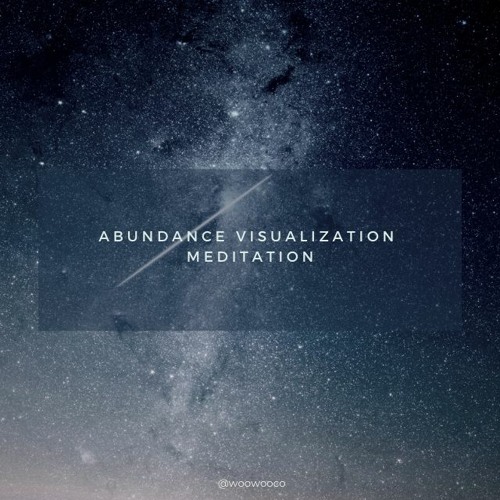
Anxiety meditation involves allowing the mind to dwell on the present moment. It is important to allow ourselves to be in the present moment, which can help us to overcome our worries and fears. This means that you observe the feelings you have now, and not follow them. Instead, acknowledge them. It is important that you keep these feelings in check so they don't become overwhelming. It is important to let these feelings go and not react to them.
To learn how to meditate on anxiety, count your breaths. Begin by counting to four on your inhale, and four on your outbreath. You can focus on the sensation of the air entering and leaving your body. Once you have finished this practice, it is possible to feel calmer. To make this a regular practice, you can do it every few minutes. Practicing this technique is very effective, as it can help you to deal with any situation that may arise in the future.

You can improve your anxiety meditation practice by paying attention to your thoughts. People are often too busy to pay attention to their thoughts. Many people have negative thoughts. This is why many people become anxious. They are always thinking of negative things. An anxiety mediation technique is all about identifying these negative thought patterns. These negative thought patterns can be identified and used to manage anxiety.
You can also practice mindfulness to help with anxiety. This is a great practice as it helps you let go of your thoughts. A decrease in anxiety can be experienced when we release stress hormones. This is the flight response that makes us anxious. This can have a positive impact on our well-being, health and overall wellbeing. This is why anxiety can be felt. This is why we feel calmer. Our minds are also more concentrated.
There are many different types of anxiety mediation. Mindfulness-based Meditation is a type of relaxation. Even though it's difficult to control your emotions, it is possible for you to do it right now. It is crucial to be aware and aware of the situation at hand. It is crucial that you are aware of every aspect of your life.

Anxiety meditation is about accepting your answers without questioning. Accepting yourself is the most important part anxiety meditation. You will find that your answers come easily. The first step in anxiety meditation is to choose silence and allow yourself the space around you to be present. Focus on the task and find the quietness that you need. This will help you stay present. Accepting your path is the best way to become more relaxed and calm.
FAQ
How often should i exercise?
A healthy lifestyle requires regular exercise. But, you don't need to spend a specific amount of time exercising. Finding something you enjoy is key. Stick with it.
If you work out three times a week, then aim to complete 20-30 minutes of moderate intensity physical activity. Moderate intensity means you'll still be breathing hard after you've finished. This type is good for burning around 300 calories.
If you prefer to walk, go for 10 minute walks four days a week. Walking is low-impact, easy on your joints, and it's also very gentle.
Jogging is an alternative to running. You can do it for as little as 15 minutes each day. Running is a great way to burn off excess calories and build muscle tone.
Begin slowly if your are not used to working out. Start with just 5 minutes of cardio a few times a week. Gradually increase the time you do cardio until your goal is reached.
What are 10 healthy behaviors?
-
Have breakfast every day.
-
Don't skip meals.
-
Eat a balanced, healthy diet.
-
Get plenty of water.
-
Take good care of your body.
-
Get enough rest.
-
Avoid junk food.
-
Do some form of exercise daily.
-
Have fun!
-
Meet new people.
How can I control my blood pressure?
Find out the causes of high blood pressure first. Next, you will need to determine what is causing high blood pressure. This could include eating less salt, losing weight if necessary, taking medication, etc.
Make sure you're getting enough exercise. Walking can be a good alternative to regular exercise if time is tight.
Consider joining a gym if your current exercise regimen is not satisfying you. It's likely that you will want to join a gym with other people who are working towards the same goals as you. It's much easier to follow a routine if someone is with you at the gym.
Do I need calories to count?
You might be asking "What is the best diet?" or "is counting calories necessary?" This depends on your health and lifestyle.
The Best Diet For Me: Which One Is Right?
The best diet for me depends on my current health status, my personal goals, my preferences, and my overall lifestyle. There are many different diets, some good and some not so good. Some diets work well for some people and others do not. So what do I do? How do I make the right decision?
These are the main questions addressed by this article. It begins by briefly describing the various diets available today. Then we will discuss the pros & cons of each kind of diet. Finally, we'll discuss which one is best.
Let's first take a look at different diets.
Diet Types
There are three main types, low fat, high protein, or ketogenic diets. Let's take a look at them all below.
Low Fat Diets
A low fat diet is a diet that restricts the amount of fats consumed. This is done through reducing the intake of saturated fats (butter, cream cheese, etc.) They are replaced by unsaturated fats such as avocados, olive oil, and cream cheese. People who are looking to lose weight quickly and easily will benefit from a low-fat diet. This diet can cause problems such constipation as heartburn, indigestion, and even stomach pain. A person may also experience vitamin deficiencies if they don't get enough vitamins.
High Protein Diets
High protein diets reduce carbohydrates to favor of proteins. These diets often have higher levels of protein than most other diets. These diets are designed to build muscle mass and help you burn more calories. One problem is that they might not be sufficient to provide regular nutrition. They are not suitable for all people because they can be restrictive.
Ketogenic Diets
Ketogenic diets are also known as keto diets. They are high in fat, moderately high in protein and low in carbohydrates. They are typically used by athletes and bodybuilders because they allow them to train harder and longer without getting tired. You must adhere to all side effects, including fatigue, headaches, nausea and headaches.
How to measure your body fat
A Body Fat Analyzer (BFA) is the best method to measure bodyfat. These devices are used to measure body fat for people who want weight loss.
What's the best diet?
Your lifestyle and individual needs will determine the best diet for your body. You also need to consider how much energy you expend during exercise, whether you prefer low-calorie foods, and if you enjoy eating fruits and vegetables.
If you are trying to lose weight, then you may want to try intermittent fasting. Intermittent Fasting means that you eat only specific meals throughout your day and not three large meals. This approach may prove to be more beneficial than traditional diets that have daily calorie counts.
Some studies suggest that intermittent fasting may improve insulin sensitivity and reduce inflammation, which can lead to improved blood sugar levels and reduced risk of diabetes. Other research suggests that intermittent fasting may promote fat loss and improve overall body composition.
Why does our weight change with age
How can you tell if your bodyweight has changed?
When there is more muscle mass than fat, weight loss can occur. This means that calories must be consumed at a rate greater than energy. Activity levels are the most common reason for weight loss. Other causes include illness, stress, pregnancy, hormonal imbalances, certain medications, and poor eating habits. When there is more fat than muscles, it's called weight gain. It occurs when people eat more calories than what they use in a given day. The most common causes are overeating, increased activity, hormonal changes, and excessive calories.
The primary reason we lose weight is that we consume less calories than what we burn. Regular exercise increases metabolism, which means that we burn more calories per day. But this doesn't guarantee that we'll lose weight. All that matters is whether we're losing weight or gaining muscles. If we're burning more calories that we consume, we'll lose weight. But if you consume more calories than you burn, you're actually storing them for fat.
As we age, we become less agile and don't move as often. We also tend have less food to eat than when our children were young. As a result, we gain weight. However, our muscle mass is more important than we realize and makes us appear larger.
If you don't weigh yourself every week, it's impossible to determine how much weight has been lost. There are many methods to measure your weight. You can check your waist size, your hips, your thighs, your arms, etc. Some prefer to use bathroom scales, while others prefer tape measures.
For a better track of your progress, try to weigh yourself once per week and measure your waistline once every month. To track your progress, you can also take photos every few months of yourself to see how far it has come.
Online measurements of your height and weight can help you determine your body mass. If you're 5'10' tall and weigh 180lbs, you'd likely weigh 180lbs.
Statistics
- The Dietary Guidelines for Americans recommend keeping added sugar intake below 10% of your daily calorie intake, while the World Health Organization recommends slashing added sugars to 5% or less of your daily calories for optimal health (59Trusted (healthline.com)
- WHO recommends consuming less than 5% of total energy intake for additional health benefits. (who.int)
- nutrients.[17]X Research sourceWhole grains to try include: 100% whole wheat pasta and bread, brown rice, whole grain oats, farro, millet, quinoa, and barley. (wikihow.com)
- In both adults and children, the intake of free sugars should be reduced to less than 10% of total energy intake. (who.int)
External Links
How To
What does "vitamin" actually mean?
Vitamins are organic compounds naturally found in food. Vitamins help us absorb nutrients from foods we eat. Vitamins are not made by the body, so they must be obtained through food.
There are two types vitamins: water soluble or fat soluble. Water-soluble vitamins dissolve easily when they are dissolved in water. These include vitamin C (thiamine), Vitamin B1 (riboflavin), Vitamin B2 (riboflavin), Vitamin B3 (niacin), Vitamin B6 (pyridoxine), Vitamin C, B1 (thiamine), Vitamin B2 (riboflavin), Vitamin B3 (niacin), and Vitamin B6 (pyridoxine). The liver and fatty tissues are home to fat-soluble vitamins. You can find vitamin D, E K, A, beta carotene, and other fat-soluble vitamins.
Vitamins are classified based on their biological activity. There are eight main groups of vitamins.
-
A - Essential for healthy growth and health maintenance.
-
C - essential for nerve function and energy generation.
-
D - essential for healthy bones, teeth, and gums.
-
E - needed for good vision and reproduction.
-
K - Required for healthy nerves and muscles.
-
P - Vital for strong bones and teeth.
-
Q - aids digestion and absorption of iron.
-
R is required for the production of red blood cells.
The recommended daily allowance of vitamins (RDA), varies according to age, gender, physical condition, and other factors. The U.S. Food and Drug Administration has established the RDA values.
For adults over 19 years, the RDA is 400 mg per day for vitamin A. However, pregnant women need 600 micrograms per day because it is important for fetal development. Children ages 1-8 require 900 micrograms per day. For infants younger than one year, 700 micrograms are required daily. However, this number drops to 500 micrograms each day for children aged 9-12 months.
Children aged 1-18 years need 800 micrograms daily, while children overweight require 1000 micrograms per days. Children who are severely obese or underweight will need 1200 micrograms each day.
Children between 4 and 8 years old with anemia will need 2200 micrograms daily of vitamin C.
2000 micrograms is the minimum daily intake for adults over 50 years old to maintain good health. Because of their higher nutrient needs, women who are pregnant or nursing need 3000 mg per day.
1500 micrograms is the recommended daily intake for adults aged 70+, who lose approximately 10% of muscle each year.
Women who have been pregnant or are lactating require more than the RDA. Pregnant and breastfeeding women require 4000 micrograms each day during pregnancy and 2500 Micrograms each day after delivery. Breastfeeding mothers need to consume 5000 micrograms every day when breastmilk has been produced.